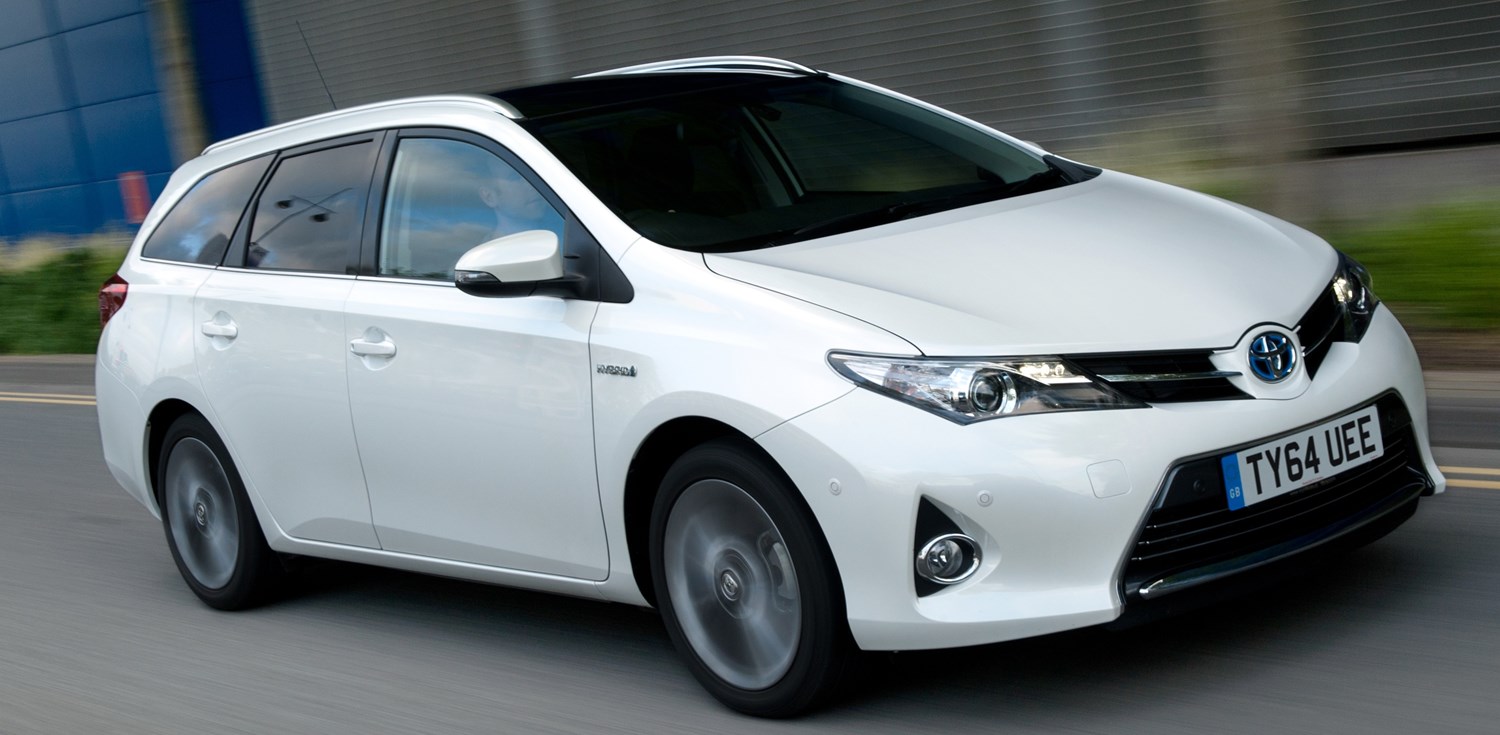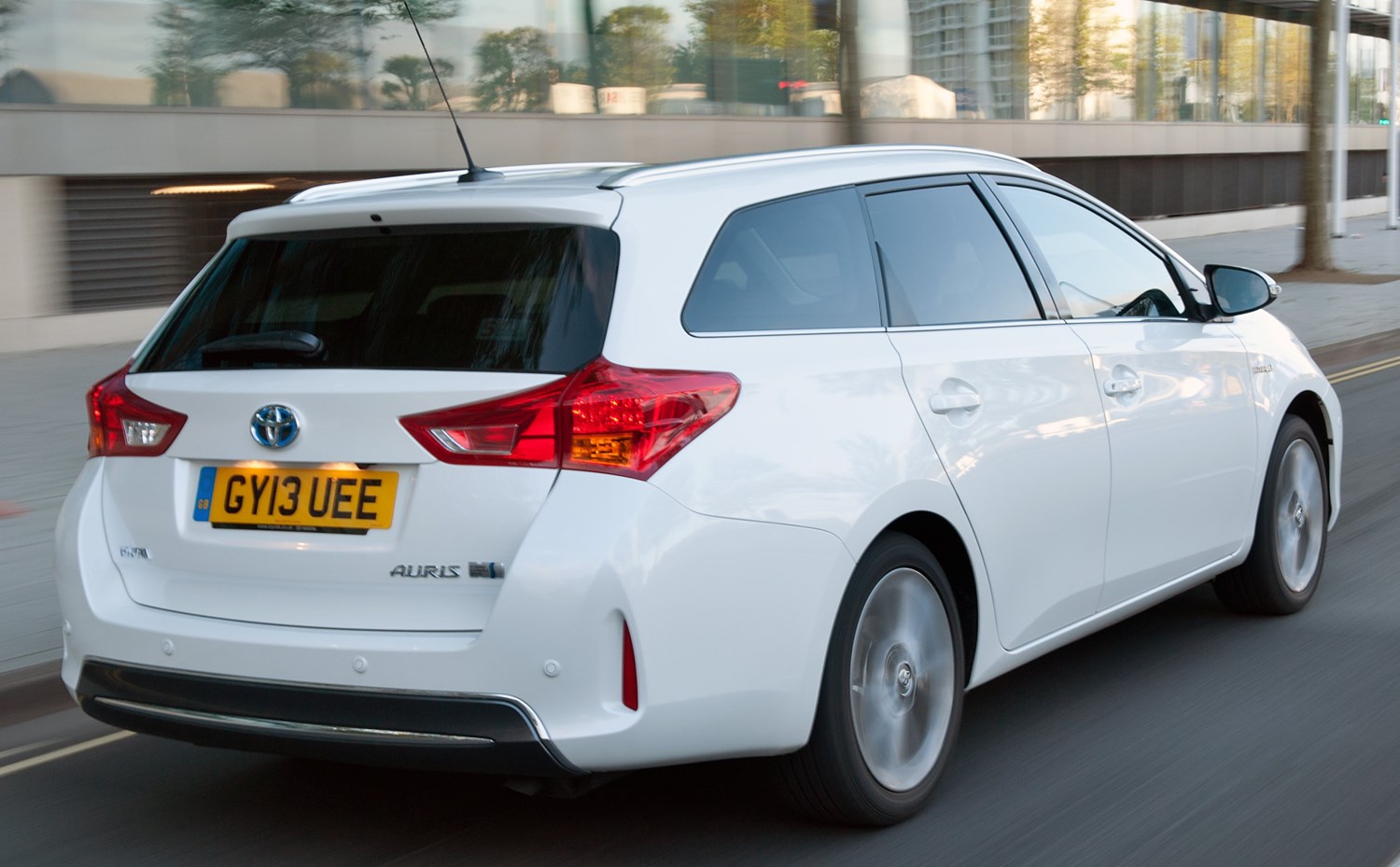Model Review
Toyota was one of the first manufacturers to adopt hybrid powertrains in its cars – starting off with the original Prius in 1997.
The continual success of the Prius lead Toyota to choose to make the Auris hatchback into a hybrid in 2010. Since then the Yaris supermini and RAV4 crossover are also now available as a hybrid. The Japanese manufacturer is dedicated to creating “fuels of the future”, and continues to experiment with alternative powertrains for its cars.
Production began in 2010 in the UK for the Auris Hybrid, and it soon became the first mass-produced hybrid car to be built in Europe. Standard features included 18-inch alloy wheels with low resistance tyres and other discreet styling touches to reduce the car’s drag.
The second-generation of the Auris went on sale in 2013, with a hybrid version following on soon after. An estate variant - the Touring Sports - of the Auris also went on sale in the same year for the first time. It has proven a hit with taxi drivers thanks to its spacious interior and low running costs.
The hybrid version of the Auris currently makes up an impressive three-quarters of the hatchback’s UK sales.
Latest model
A facelifted version of the Auris went on sale towards the end of 2015, with a fresh face and extra chrome – adopting the front end from the rest of Toyota’s range.
For 2018, Toyota did make the odd change. It dropped the Active trim level in place of a new Icon model. Other trim levels also received minor equipment changes and upgrades, too.
Value for money
The Auris Hybrid does cost lightly more than the equivalent petrol or diesel versions, but the savings you will be able to gain from the hybrid will soon recoup this saving. Prices for the hybrid start at £22,955, while the estate model costs from £23,495.
It’s reasonably well-equipped with standard kit including automatic air-conditioning, LED DRLs, Bluetooth, 16-inch alloy wheels and a reversing camera.
Prices for the first-generation Auris Hybrid start from as little as £5,000, although you’re realistically looking at around £6,500 for an early car with around 60,000 miles. For the latest version prices start at around £9,000, with facelifted versions starting from £13,000. We saw a 2016 car for sale with 35,000 miles for £13,300 – a substantial saving off a new model.
As for the estate, prices start from around £11,000 for a 2013 car with relatively low miles.
Looks and image
The Auris is not a particularly exciting car. It is mundane to look at on both the inside and outside, and isn’t exactly inspiring to drive. The Auris Hybrid is clearly based around the philosophy of comfort and reliability.
It is perfectly to the city, where it’s easy to drive and quite comfortable. Unfortunately it completely lacks all driver appeal, and the extra weight for the battery pack and electric motor dulls the experience even more, as it’s not exactly a good car to drive even when fitted with a petrol or diesel engine. The steering lacks feel, too, which doesn’t inspire confidence. That said, the most spirited driving it is ever likely to encounter is when a taxi driver is behind the wheel.
The CVT gearbox is frustrating to use, though, as it holds onto revs for far longer than you would want. It also makes you question how you would actually obtain the car’s fuel consumption could be met in any driving. Unfortunately, this is the only gearbox offered in the Auris Hybrid.
It’s very comfortable, too, and is a smooth and relaxing car to travel in, even more so in hybrid guise.
While the Auris does feel well put together, the materials used are not pleasant or inspiring in any way, and do make the cabin feel exceptionally dull. Neat touches such as the digital clock, air vents and touchscreen do add a touch of flair, though.
Space and practicality
Against rivals such as the Volkswagen Golf and Seat Leon, the Auris is not quite as practical with less rear space and versatility. However, if you require that extra space you do have the option of the Touring Sports estate. Visibility is excellent, too, thanks to large windows, which makes parking manoeuvres pretty simple. Rear space is ample, although the flat floor due to the lack of transmission tunnel does make it handier if you frequently carry three passengers in the rear.
Unlike other hybrid or electric versions of conventionally-fuelled vehicles, the Auris Hybrid retains the same sized boot as the petrol and diesel versions. There’s 337 litres of boot capacity in the hatch and 507 litres in the estate version. Folding the seats down increases this to 1,176 litres and 1,635 litres in the hatch and estate respectively.
However, if you were thinking of towing with the Auris Hybrid, you’ll be disappointed to find that Toyota regards the Hybrid as an unsuitable tow car.
The Auris has proven to be a very safe car, securing a five-star Euro NCAP rating. All models also come with the Toyota Safety Sense package that includes autonomous emergency braking, auto-dipping headlights, traffic-sign recognition and lane-departure warning.
Engines
Just one powertrain option is available on the Auris hybrid – a 1.8-litre petrol engine paired with an electric motor. These combine to produce 134bhp – Toyota won’t provide torque figures for its hybrids. Power is fed to the front wheels by the aforementioned CVT automatic transmission.
The hatch takes 10.9 seconds to accelerate from 0-60mph, while the Touring Sports takes 11.2 seconds. Both versions have a top speed of 111mph.
Because the Auris Hybrid is not a plug-in hybrid, it does not have an all-electric range, while it can’t be charged up either – this happens on the move instead.
In the Auris Hybrid’s most basic spec Toyota claims it will return 78.5mpg on the combined cycle, with CO2 emissions of 82g/km for the hatch, and 83g/km for the estate.
Running costs
While the Auris Hybrid should theoretically be cheap to run with the figures that Toyota claim, the reality is that you will not be able to obtain anywhere near these figures in normal driving. The unfortunate reality is that unless your Auris Hybrid stays in the city all the time, it probably won’t be that much cheaper to run than the 1.2-litre petrol version.
Savings will be there for business users, though. The Auris Hybrid in its simplest guise is in the 17 per cent benefit-in-kind bracket, as opposed to the diesel in 23 per cent. This means that as a company-car the hybrid will save you money.
Unfortunately, with the revised CO2 brackets that came into force in March last year, the Auris Hybrid is no longer exempt from road tax as it was before. Road tax for the first year is now £120, and £140 a year thereafter.
All Auris Hybrid models are placed in insurance group 12, comparatively lower than the petrol version and a diesel-engined Ford Focus, too. If you choose a car with the Toyota Safety System, this drops to insurance group to 10.
Things to look out for
The Toyota Auris has proven to be a very reliable car, and the hybrid version is no different.
Toyota has a long reputation for the reliability of its cars, and has developed a loyal customer base because of this. This is also helped by Toyota’s five-year 100,000-mile warranty, that gives you the added confidence in its cars.
Rivals
The Toyota Auris Hybrid’s direct rivals are the Toyota Prius and Lexus CT – the latter using more or less the same running gear is the Auris, albeit in a more premium package.
Other rivals include the Kia Niro and Hyundai Ioniq Electric. If you are wanting something a little more premium there is the Audi A3 e-Tron and Volkswagen Golf GTE.





